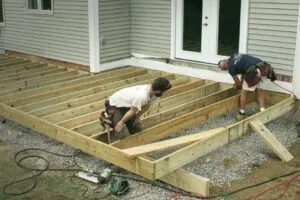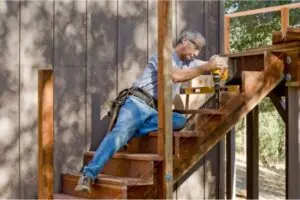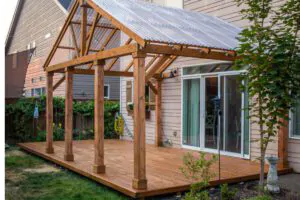Building a deck improves your outdoor space, offering a functional area for relaxation and gatherings. Planning carefully and focusing on critical elements such as proper joist spacing and adequate drainage are crucial to ensure a successful construction. Proper joist spacing is essential for deck stability and longevity, while adequate drainage helps prevent water accumulation that can lead to damage. Understanding how to build a ground-level deck involves not just the basic construction steps but also attention to details that contribute to the deck’s durability and safety. Proper planning and execution will ensure your deck remains a reliable and enjoyable feature for years. Here is what you need to know to ensure your deck-building project goes as smoothly as possible:
I. Planning Your Ground-Level Deck
Before securing the first beam or driving the first screw, careful planning is essential for a ground-level deck. This involves evaluating the site for proper drainage, determining the correct joist spacing for stability, and selecting durable materials. Taking the time to plan ahead and be ready for what is to come will help ensure you have an easier time, from start to finish.
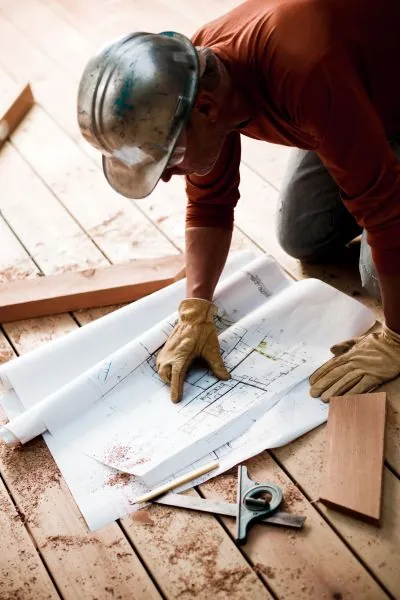
Site Selection and Layout
Choosing the right site for a ground-level deck involves more than just identifying a flat area. Look for a location that minimizes the need for stairs and ensures even support for the rim joist across a stable base. This helps avoid future structural issues or uneven settling. Once the site is selected, mark the deck’s perimeter with a laser level and outline the positions for concrete footings. A gravel bed beneath the deck aids drainage and prevents wood rot. Ensure you have all the necessary tools, like a drill, ready for a smooth construction process.
Choosing the Right Materials
Selecting materials for your deck involves more than aesthetic choices; durability is critical. Use a circular saw to cut lumber to the correct length, which is crucial for maintaining appearance and structural integrity. Opt for high-quality lumber that can endure varying weather conditions and provide lasting support. Additionally, the fasteners and brackets used must be robust. Galvanized or stainless-steel fasteners prevent rust and deterioration while choosing the correct brackets for size and load capacity, which ensures a secure and long-lasting deck.
II. Step-by-Step Construction Process

Learning how to build a ground-level deck is about enhancing your outdoor area and extending your living space. With careful deck design, the construction process involves key steps crucial for achieving a successful and durable deck. Each stage of construction plays a vital role in the final result and deserves your care and attention during the construction process.
Setting Up the Foundation and Footings
Laying a solid foundation is crucial for a stable deck. Begin by leveling and compacting the ground to create a solid base that prevents shifting. Position and anchor concrete footings according to your deck’s layout, ensuring they support the weight of the joists and decking material. It is essential to consider soil conditions and set footings below the frost line to prevent issues from freeze-thaw cycles. Proper footing placement establishes a secure base for the joists and overall deck construction, ensuring long-term stability and durability.
Framing the Deck Structure
With the footings in place, the next step is creating the ground-level deck framing plans. Once the plan is ready, please start the process by setting the perimeter boards, ensuring they are leveled from the house to the outer edge for a smooth transition. Accurate measurement and placement are essential for defining the deck’s boundaries and preparing for installing joists. Choose termite-resistant wood for durability, and securely attach the perimeter boards to the inner joists. This creates a solid frame to support the deck and withstand daily use and environmental factors.
Attaching Joists and Deck Boards
Securing joists correctly is vital for a stable deck. Align and space the joists, then use metal brackets and screws to fasten them to the perimeter, ensuring a level surface. Shim beneath joists if needed to achieve evenness. Precision is vital When attaching deck boards to maintain a consistent appearance and ensure the deck is flat. Applying a protective layer of paint can safeguard the wood from weather damage, preserving the deck’s look and functionality. Proper fastening prevents warping and ensures a durable walking surface.
Installing Deck Fasteners and Trim
To secure deck boards, use anchor bolts for a robust and stable connection to the joists, which is essential for the deck’s overall integrity. Proper anchoring meets the requirements of many decking materials and ensures the deck’s durability across various weather conditions. During this process, wear eye protection to guard against debris and maintain safety. Installing fasteners and trim with care enhances the deck’s appearance and upholds safety standards, ensuring the finished deck is functional and secure.
III. Essential Tools and Materials
Starting a ground-level deck project involves having the right tools and materials. The following lists outline the essential items to build a functional and attractive outdoor space. Ensuring you have these resources will help ensure a successful and smooth construction process. It will also save time when you don’t have to stop mid-project to hunt down the right tools and materials.
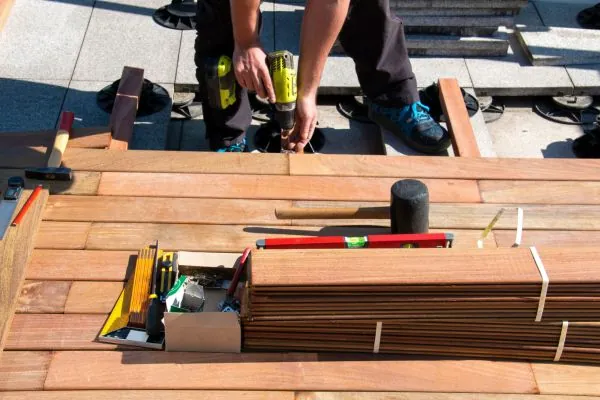
List of Required Tools
Building a deck on the ground requires a well-organized toolkit. Essential tools include a hammer for securing joists, a circular saw for making precise cuts on lumber, and a measuring tape to ensure accurate dimensions. Additionally, a drill is necessary for assembling the deck, while a level helps achieve an even surface. A shovel is needed to prepare the foundation. Each tool plays a crucial role in ensuring a successful deck construction, contributing to the finished deck’s stability and functionality.
Materials Needed for Construction
Building a ground-level deck requires specific materials for a stable and lasting structure. Essential items include weather-resistant lumber for the joists and deck boards, concrete for the footings, and gravel for the base layer to ensure proper drainage and stability. Rust-resistant fasteners and brackets are crucial for securing the deck components and preventing deterioration. Adhering to these material specifications ensures that the deck will be durable and functional, providing a reliable outdoor space for years to come.
IV. Finishing Touches
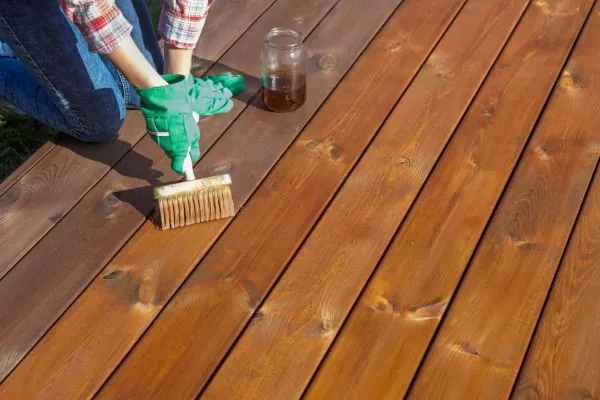
As the deck is completed with secure joists and properly laid boards, the focus shifts to enhancing accessibility and long-term preservation. Choosing the appropriate stains and sealants is crucial for protecting the timber from weather damage. Additionally, selecting suitable furnishings and lighting will create a comfortable and inviting space for relaxation and entertaining.
Adding Steps or Ramps
Incorporating steps or ramps into your deck design improves accessibility and functionality. Steps require precise measurements and careful cutting, while ramps require gradual incline and adequate space. These additions make the deck usable for people with different mobility levels, enhancing its practicality and appeal. Well-designed steps or ramps also ensure the deck integrates seamlessly with the surrounding landscape.
Decorating and Protecting Your Deck
Decorating your deck involves choosing outdoor furniture that fits its size and purpose, adding planters, and installing ambient lighting to create a welcoming space. To protect the deck, apply a high-quality sealant to shield it from weather damage and wear. This maintenance step preserves the deck’s appearance and extends its lifespan, ensuring it remains an attractive and functional part of your outdoor area.
V. Hire a Local Deck Professional for your ground-level Deck
Building a ground-level deck can be challenging, and hiring a local deck professional can be very helpful. These experts bring the necessary skills and have mastered the safe and secure way how to build a ground-level deck. They are familiar with local building codes and regulations, ensuring compliance and simplifying the permit process. Additionally, professionals have access to specialized tools and equipment, allowing them to complete the project efficiently and with high craftsmanship. By hiring a skilled tradesperson, homeowners can avoid potential issues and focus on the design, knowing their deck will be a quality addition to their home.
Conclusion
Building a ground-level deck requires a clear plan to ensure a stable and durable outdoor space. Choosing the right location and materials and following a structured approach leads to a functional and attractive deck. Using the proper tools throughout construction enhances both durability and appearance. For added assurance, hiring a local professional can ensure compliance with local codes and achieve high-quality craftsmanship. Call your local deck-building pros today to get started!


